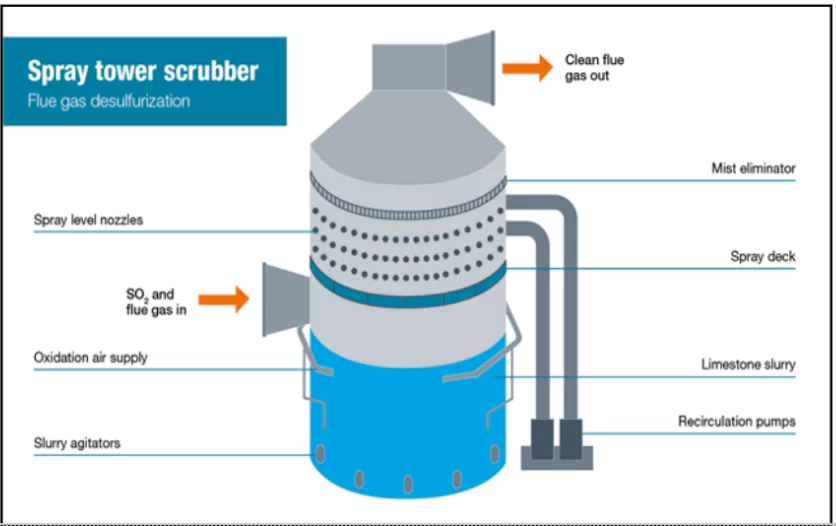NITI Aayog recently raised questions about the necessity of flue gas desulfurization installations in India’s thermal power plants.
- NITI Aayog recommended the federal environment and power ministries to direct coal-based power plants to stop placing fresh orders for the desulphurisation gear
Enroll now for UPSC Online Course
About Flue Gas Desulphurisation (FGD)

- FGD : It is a scrubbing method that utilizes an alkaline reagent, typically sodium- or calcium-based, to remove sulfur dioxide (SO₂) from the flue gas emissions of fossil-fueled power stations or coal-fired power plants.
- Effectiveness: FGD can remove up to 95% of sulfur dioxide from flue gas, significantly reducing SO₂ emissions.
Flue gas desulfurization gypsum (FGDG)
- FGDG is an industrial byproduct generated during the flue gas desulfurization process in coal-fired power plants.
- Flue gas desulfurization systems have been used to limit the release of sulfur dioxide from coal-fired power plants since the late 1960s, but in the past decade the production of FGDG has drastically decreased
|
- Flue Gas Composition: Also known as exhaust or stack gas, flue gas originates from combustion plants and contains a mix of pollutants, including particulate matter (dust), sulfur oxides, nitrogen oxides, and carbon monoxide.It may contain pollutants such as particulates, sulfur dioxide, mercury, and carbon dioxide, but most flue gas consists of nitrogen oxides. Untreated flue gas from power plants, industrial facilities, and other sources can significantly impact local and regional air quality.
- Types of FGD Systems:
- Dry Sorbent Injection: Utilizes a dry alkaline agent to neutralize SO₂.
- Wet Limestone-Based System: Uses a slurry of water and limestone for higher removal efficiency.
- Sea Water-Based System: Employs natural alkalinity in seawater to absorb SO₂.
- Process Overview: In the scrubber or absorber tower, uncleaned flue gas is sprayed with a mixture of water and limestone (scrubbing slurry), which reacts with sulfur dioxide and binds it, preventing its release into the atmosphere.
Check Out UPSC Modules From PW Store
Impact of Sulphur Dioxide in the Environment
- Major Air Pollutant: Sulphur dioxide is a severe environmental pollutant, harmful to human, animal, and plant health.
- Acid Rain Precursor: SO₂ contributes to acid rain, which harms forests, freshwaters, and soils.
- Acid rain disrupts ecosystems by killing insects and aquatic life forms, damaging vegetation, and reducing biodiversity.
- It causes damage to Infrastructure and materials causing paint to peel and corrodes steel structures such as bridges.
- Accelerates the weathering of stone buildings and statues, eroding cultural and historic landmarks.
![]() 28 Oct 2024
28 Oct 2024


